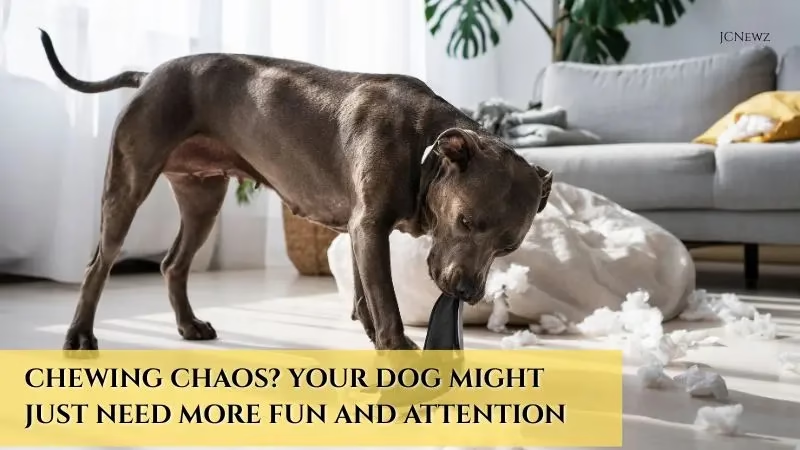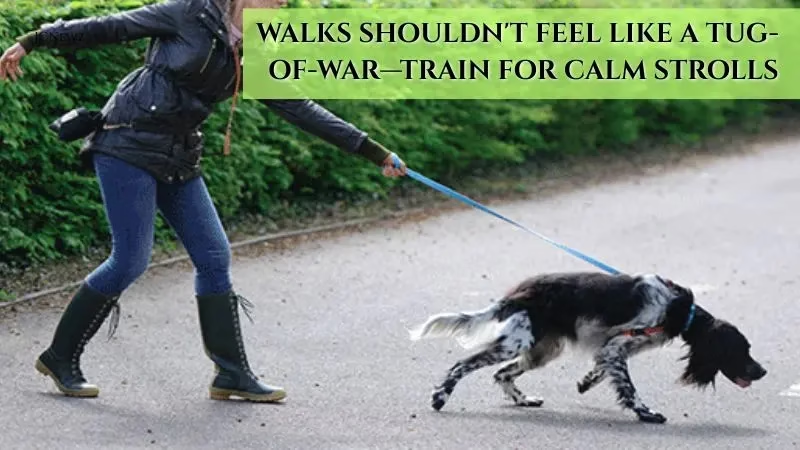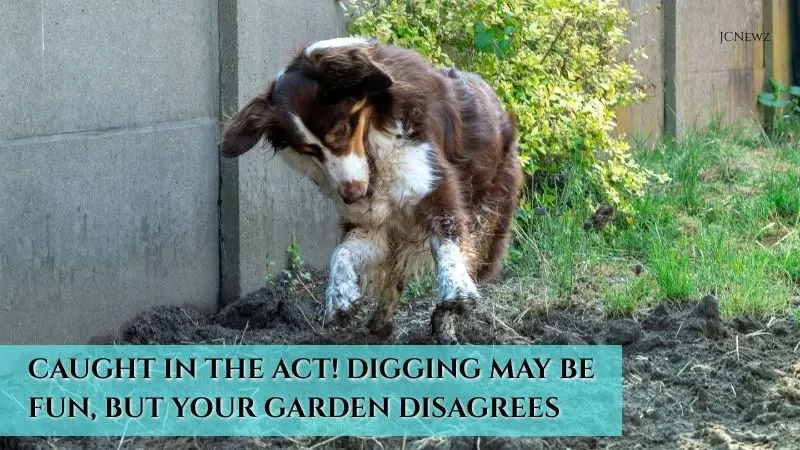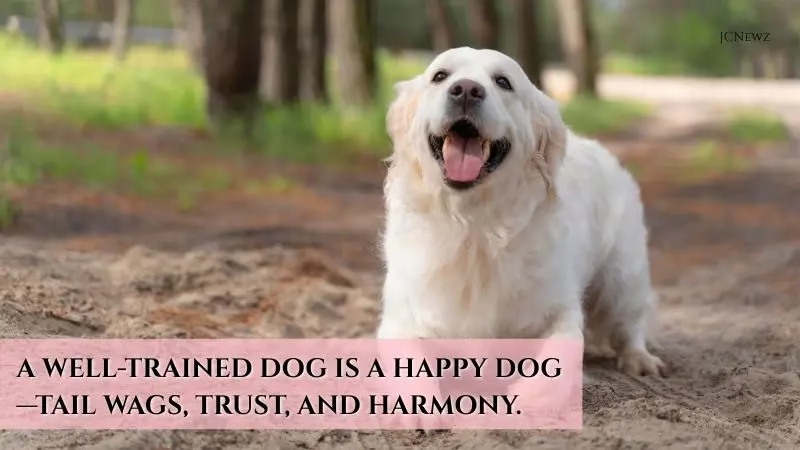Table of Contents
Dogs offer happiness, companionship, and unconditional love. Life gets fulfilled with a dog. There is some unique joy attached to a wagging tail as it rushes to greet you or just sitting there as a loyal friend by your side. However, some dogs, even the well-mannered or loving ones, may develop behavior problems that challenge the relationship. Barking excessively, chewing everything destructively, jumping on the guests, pulling on the leash, are just a few of those troubles that can stress out both dog and owner.
Such behaviors do not implicate a “bad” dog; they only suggest that certain needs, whether physical, emotional, or mental, may not be fully satisfied. When these problems are ignored, they worsen or become ingrained habits, threatening to sap the love between dog and owner. On the bright side, if the causes for behaviors are clearly understood, then with consistency and positive reinforcement, most will go away in time.
We’ll review some of the most common dog behavior problems in this article. What is equally important is giving practical and humane ways you can try to encourage your dog to behave reasonably well, improving their welfare and strengthening your bonds with our four-legged friend.
Dog Behavior Problem 1: Excessive Barking
The Problem:
Dogs bark, so to speak, as a form of communication. However, excessive barking or barking at inappropriate times can be signs of deep hats-boredom, fear, or territoriality.
Common Triggers:
- Boredom or loneliness
- Alerting to noises or passersby
- Attention-seeking
- Separation anxiety
The Solution:
- Identify the trigger: Is your dog barking at specific times? Keep a log for patterns.
- Exercise and enrichment: Tired dog equals quiet dog. Engage him in walks, playtime, and puzzle toys to decrease boredom barkings.
- Training Techniques: Using the “quiet” command: Allow the dog to bark for a while and then wait for a bit. Say “quiet” and reward the dog with a treat. The treat reinforces the command.
- Don’t Reward Barking: Never reward a dog barking without any cause with attention.
Dog Behavior Problem 2: Destructive Chewing

The Problem:
Chewing is a natural behavior for puppies, but when it becomes destructive, such as chewing furniture, shoes, and doors, it could be a sign of stress or boredom.
The Fix:
- Puppy-proof your home. Set all valuables completely out of reach of your puppy.
- Grateful to chew: Give several safe and sturdy toys for him to alternate among them.
- Watch and redirection: If caught chewing something inappropriate, calmly redirect your dog to a toy.
- Exercise and mental stimulation: A bit of tiredness keeps dogs from destructive chewing.
- Crate training: This might help control the environment when you are not home.
Dog Behavior Problem 3: Separation Anxiety
The Problem:
Dogs are social creatures, and some reasonably cling to their owners, but if owners leave them when they feel anxious to the extreme, it can become a terrible trauma-so much so that they bark and destroy or sometimes even hurt themselves.
Symptoms:
- Whining or barking when left alone
- Pacing, drooling, or urinating in the house
- Destructive behavior focused around exits (doors, windows)
The Fix:
- Desensitize departures: Practice leaving for short periods and gradually extend the time.
- Create a positive association: Leave your dog with a favorite toy or a treat-dispensing puzzle.
- Avoid dramatic greetings: Stay calm when leaving and returning to prevent heightening anxiety.
- Consider professional help: Severe cases may benefit from working with a certified dog trainer or behaviorist.
Dog Behavior Problem 4: Jumping on People
The Problem:
Although jumping can be an excited greeting, it can sometimes get dangerous especially when children or elderly guests are on site.
The Solution:
- Ignore and redirect: Turn away and ignore the dog until it has all four paws on the floor. Once all four paws are on the ground, offer some kind of attention to it.
- Teach alternative behaviors: Train your dog to sit when meeting people and give rewards for doing so.
- Be consistent: Every single person your dog meets needs to have the same response: do not reward jumping with affection or play.
Dog Behavior Problem 5: Pulling on the Leash

The Problem:
A dog that is always pulling makes walks unpleasant and risks injury.
The Fix:
- Proper gear: A front clip harness or a head halter will discourage pulling.
- Loose-leash walking: Reinforce behavior of walking beside you. Stop moving ahead when pulling starts. Start again only when the leash is loose.
- Change direction: If your dog pulls ahead, turn around and walk the other way to teach paying attention to your movements.
Dog Behavior Problem 6: Digging
The Problem:
Digging can wreak havoc on your lawn and garden, possibly indicating boredom, anxiety, or prey instinct.

The Fix:
- Identify the reason: Are they chasing scents, escaping, or just bored?
- Provide alternatives: Designate a digging area or sandbox where digging is allowed.
- Bury toys: Encourage digging in approved areas by hiding toys or treats.
- Exercise and mental stimulation: Daily walks and interactive games can reduce the urge to dig out of boredom.
Dog Behavior Problem 7: Aggression
The Problem:
Aggression targeted at, say, a human or an animal, is a serious behavior problem that deserves careful consideration.
Types of aggression include:
- Fear-based
- Resource guarding
- Territorial or possessive
- Redirected aggression
Fixing aggression:
- Identify the trigger: Observation is key to finding what causes the aggressive reaction.
- Punish not: Punishing comes with the possibilities of increasing fear and the aggressive behavior.
- Manage the environment: Steer away from all triggers as far as possible until there is a training program in place.
- Professional help: A certified dog behaviorist or trainer who has experience with aggressive behaviors should be the next step.
Dog Behavior Problem 8: Resource Guarding
The Problem:
When a dog growls, snaps, or becomes possessive over food, toys, or other objects, it’s resource guarding.
The Fix:
- Trade-up method: Teach your dog that giving up an item results in getting something better.
- Desensitize: Gradually get your dog used to people being near their food or toys while rewarding calm behavior.
- Avoid conflict: Never yank items away—this increases anxiety and the likelihood of aggression.
Dog Behavior Problem 9: House Soiling
The Problem:
Inappropriate urination or defecation can mean a medical problem, poor training, or stress.
The Fix:
- Medical problems: Always check with a vet first.
- Maintain a routine: Feed and take your dog out at the same times to regulate elimination.
- Positive reinforcement: Praise your dog and reward him for going outside.
- Clean accidents immediately: Use an enzyme-based cleaner that will remove odors and prevent re-marking.
Dog Behavior Problem 10: Mounting or Humping
The Problem:
Mounting can be embarrassing and may be a sign of dominance, stress, or play.
The Fix:
- Distract and redirect: Engage your dog in another activity.
- Train: Work basic obedience like sit or leave it.
- Do not reinforce: Do not laugh or draw attention to it.
Prevention: Setting Your Dog Up for Success
Behavioral issues usually stem from certain needs left unfulfilled. Here’s how to create a balanced, happy canine environment:
- Routine: Dogs love to operate in their own structured environment.
- Socialization: Give your dog positive exposure to new people, places, and other animal companions early in life.
- Training: Always do positive reinforcement training for communication and trust enhancement.
- Enrichment: Provide toys, scent games, training sessions, and new experiences for mental stimulation of your canine.
When to Seek Help from a Professional

If your dog’s behavior enters into the realms of danger or becomes resistant to improvement through ordinary training, it might be the very moment to seek help from a certified dog trainer, behaviorist, or veterinarian. Pick up on identification early so as to prevent problems from deepening and to fortify the bond between you and your dog.
Final Thoughts
The human-dog bond creates one of the most fulfilling relationships, in which loyalty, happiness, and friendship are woven into the life of weekdays. The relationship should have its share of time, patience, and communication. Behavioral problems are simply part of the dog’s learning process and not a mark of being a “bad” dog. Rather, they are signals-giving clues that something is amiss: boredom, anxiety, absent boundaries, or competing needs from either an emotional or physical viewpoint.
Instead of engaging in consequences in anger, knowing the reason for a behavior is the way to solve it. Problems such as barking, chewing, aggression, or anxiety must be addressed through heartfelt, consistent training and correct methods. Having a schedule, providing enrichment, and setting firm boundaries can turn even the most difficult dog into an agreeable and happy squirrel for all members of the family.
The secret of it is in considering behavioral challenges as opportunities that create bonds with your dog, as opposed to considering them as problems. With sincerity and a willingness to stay in the learning curve and adapt accordingly, you will be solving the unwanted behaviors and collaborating to build a trusting and lifelong relationship occasioned by respect and love.


1 thought on “10 Dog Behavior Problems: Simple Fixes That Work”